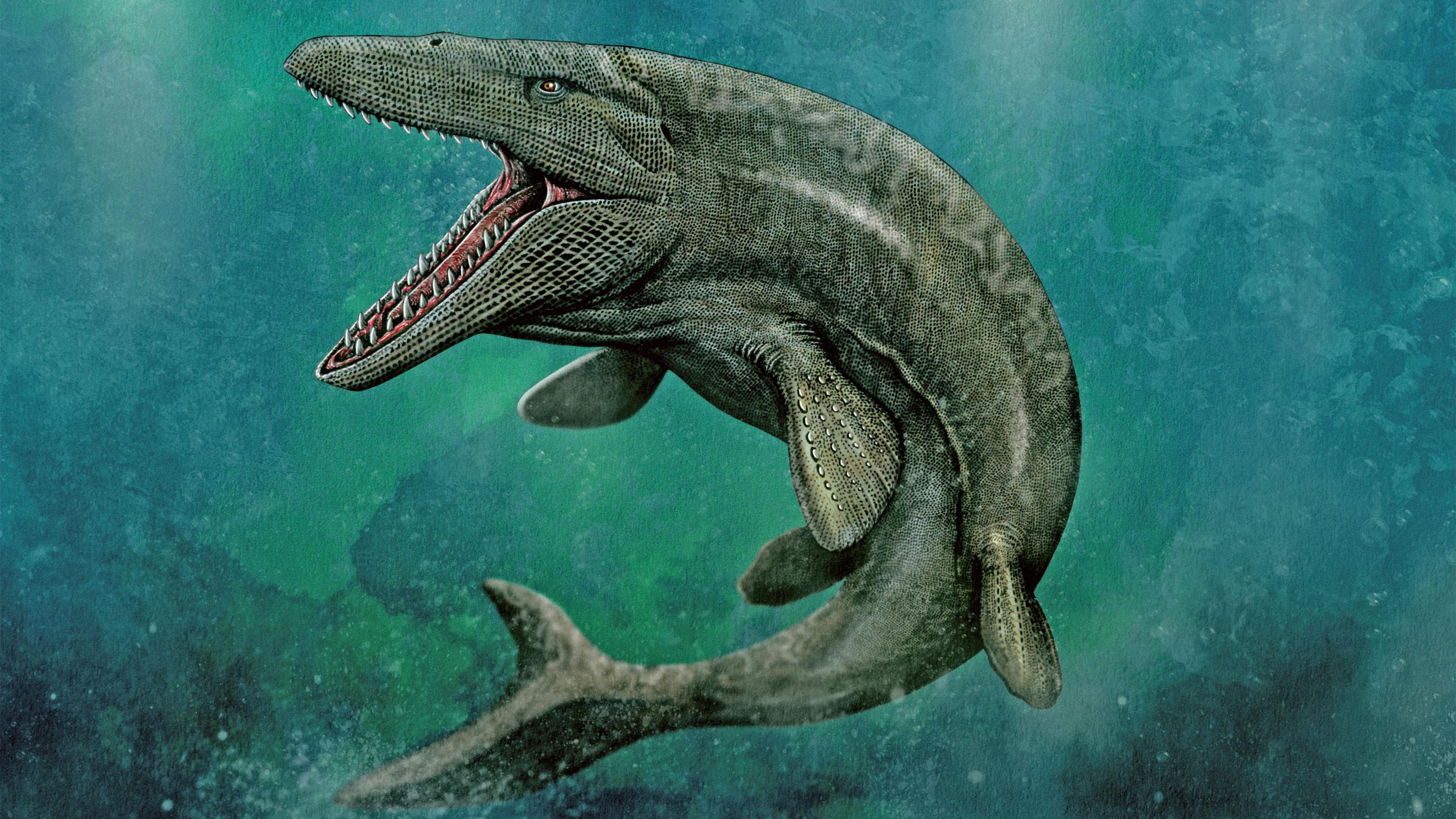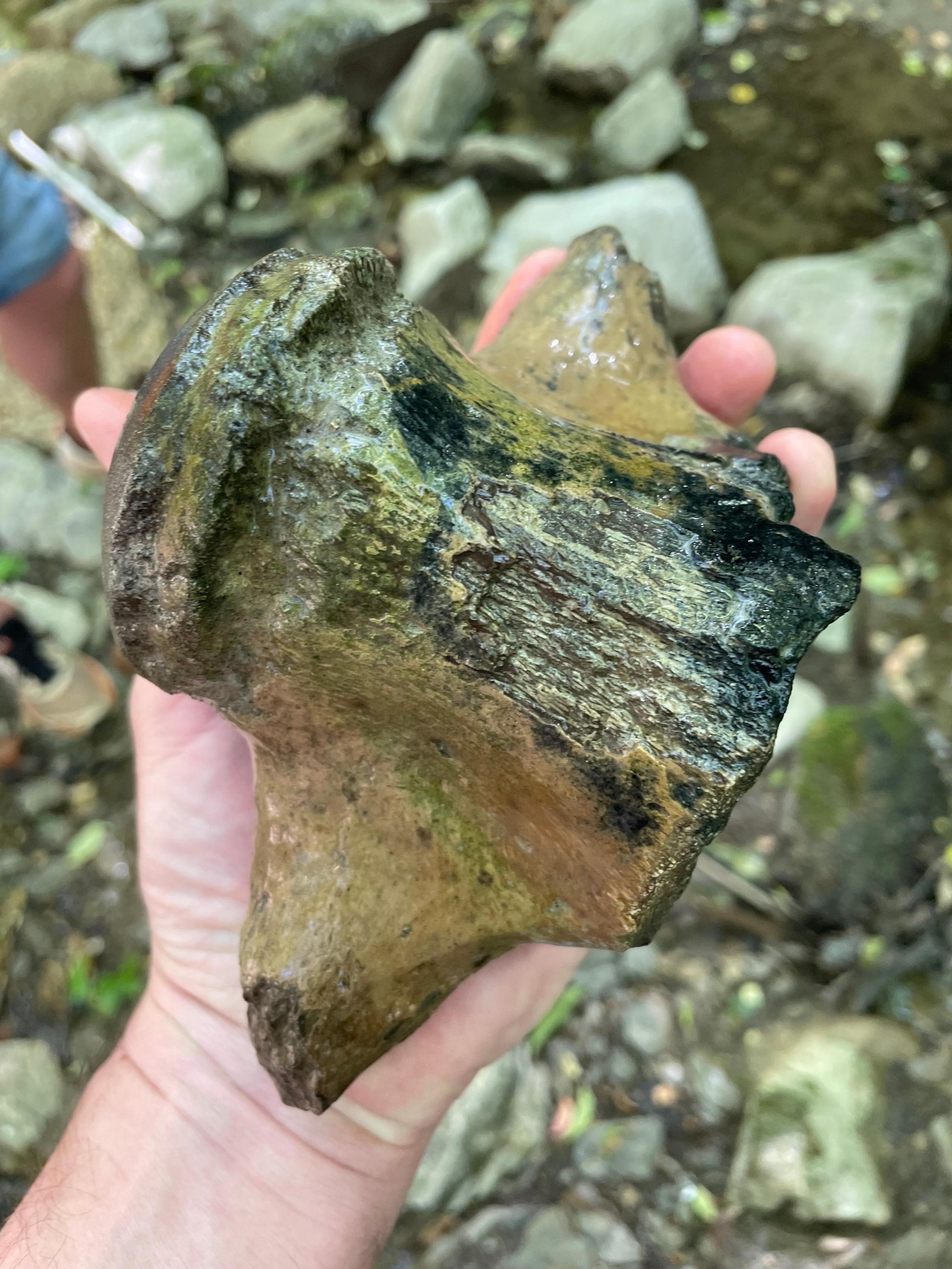Fossil of giant 'sea dragon' found

Mosasaurs were apex predators- top predators of the food chain
- Published
Geologists in the United States have unearthed the fossil of a Cretaceous-era mosasaur - sometimes referred to as a "sea dragon".
The fossilised backbone of a Mosasaurus hoffmannii was found on a riverbank in the Mississippi River.
Researchers only found a single vertebra of the dinosaur which means they can't be sure how big the mosasaur was.
However, they believe the sea dragon could have been at least 30 feet (around 9 metres) and could have even been up to 50ft (15.24m) long.
That's around the same length as a double-decker bus!
Skull of ancient sea monster unearthed
- Published10 December 2023
Check out the ancient sea creature which walked on stilts!
- Published26 April 2022
Schoolgirl discovers fossil of huge prehistoric sea reptile
- Published18 April 2024
The giant sea lizard ruled the oceans back when dinosaurs dominated Earth.
It lived during the late Cretaceous period, around 66 to 82 million years ago.
Mosasaurs were apex predators - that means they were top predators in their food chain.
At their largest they could weigh up to 9,000 kilograms.
Mosasaurs, like most dinosaurs, went extinct at the end of the Cretaceous period.

The large Mosasaurus hoffmannii lumbar vertebrae
Geologist James Starnes works at the Mississippi Department of Environmental Quality's Office of Geology. He spoke to Newsround about his findings.
He said: "Finding fossils is just plain exciting. When you find a fossil, you realize that you are discovering a lost world and an animal that once lived there."
"Finding a fossil bone from a real giant sea dragon that lived at the same time as the dinosaurs is really hard to put into words!"
